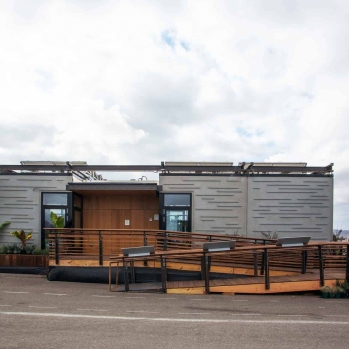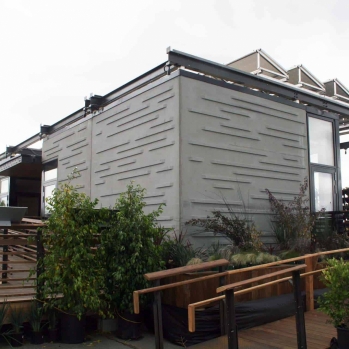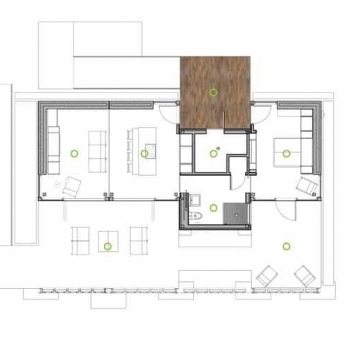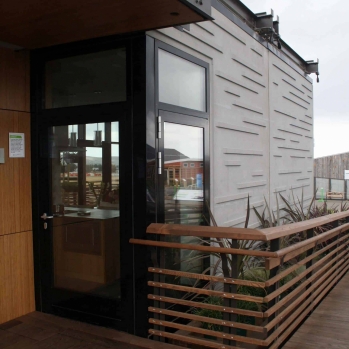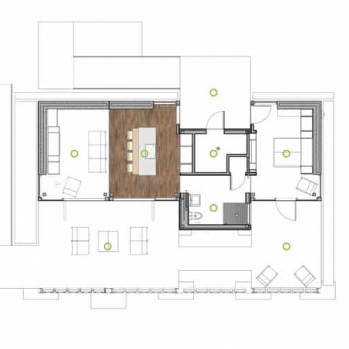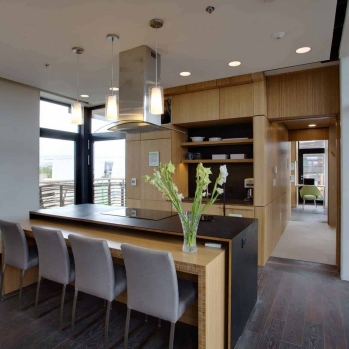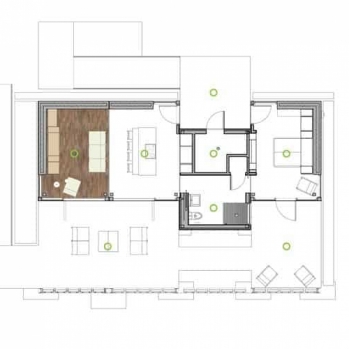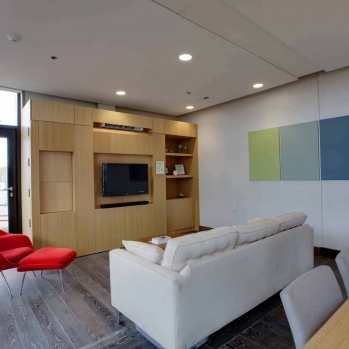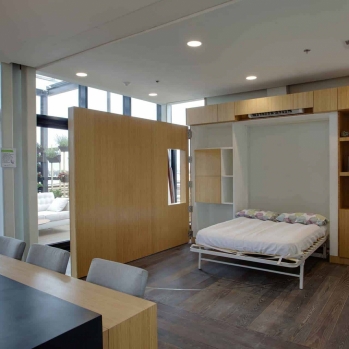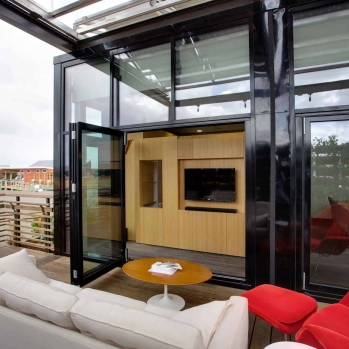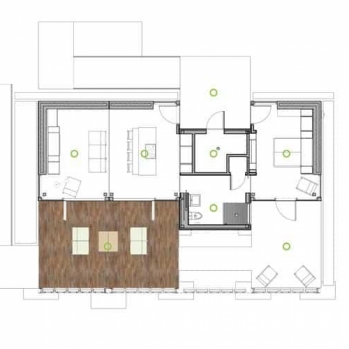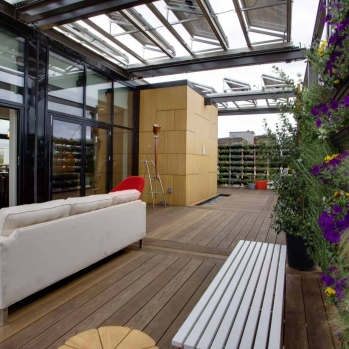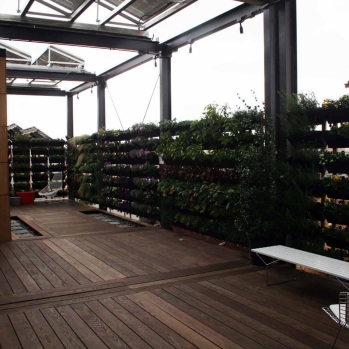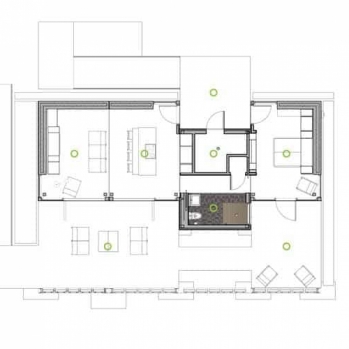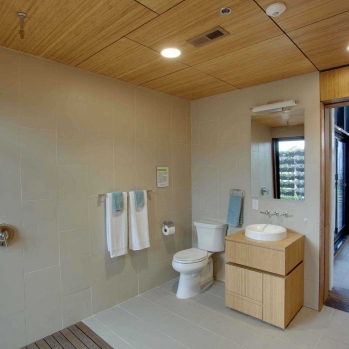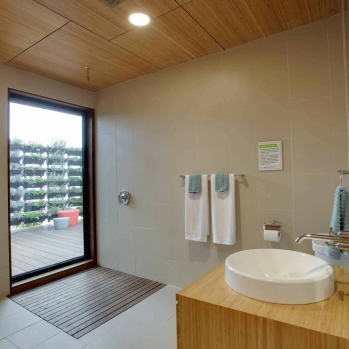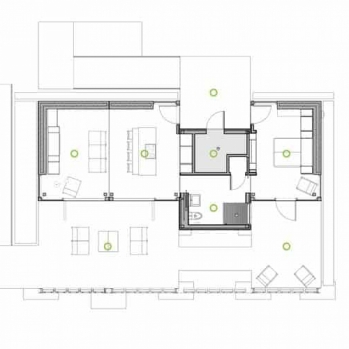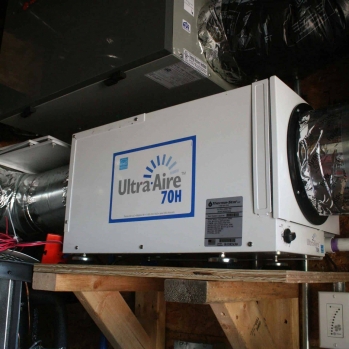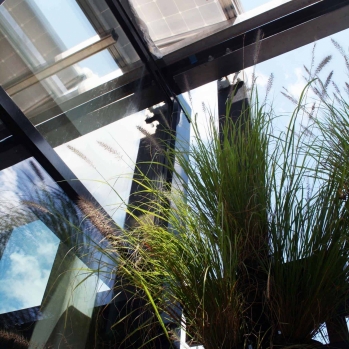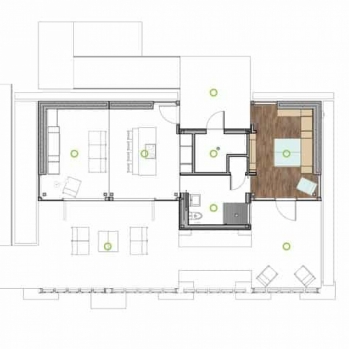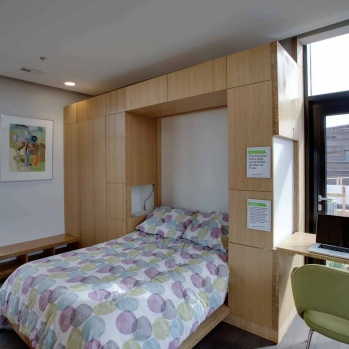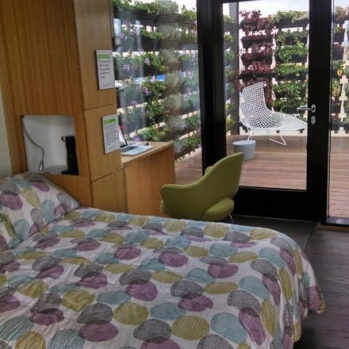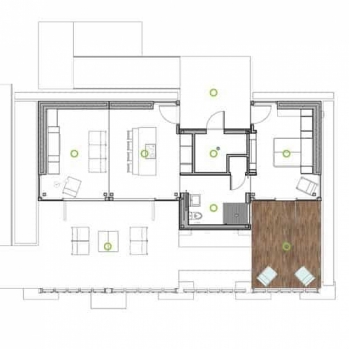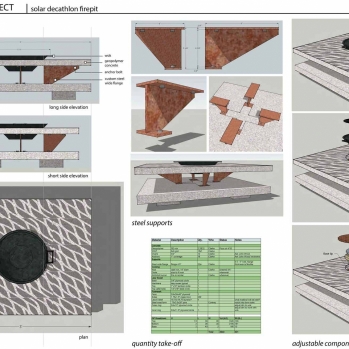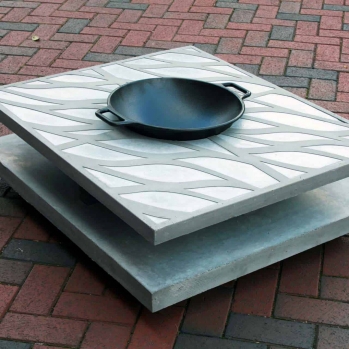FIXING CONCRETE: URBAN EDEN PROJECT
Over the past 10 years as climate change has continued to rear its progressively uglier head, my focus has turned more toward its mitigation as a design challenge. In terms of the built environment, concrete is center stage. On the one hand, it is responsible for a huge percentage of our collective carbon footprint, on the other it has great potential to save energy as part of an intelligently conceived building envelope. Concrete is, after all, a traditional material with thousands of years of history. It is hygroscopic and massive like the lion’s share of the systems I had been studying for years. While I was a graduate student at UNC Charlotte, we designed and built a project that I consider a step in the direction of “fixing concrete”. We applied research being done on campus to use a new kind of concrete, geopolymer cement concrete, that represented a massive reduction in carbon footprint in a high performance envelope of our own design. The project was UNCC’s entry in the 2013 Solar Decathlon which required it be a small, completely solar-powered house. We conceived it as an urban infill project for Charlotte and wanted to create a building that claimed its own private outdoors. We did this by essentially combining indoor and outdoor rooms into a single living environment. To read my more extensive architectural description, go here.
